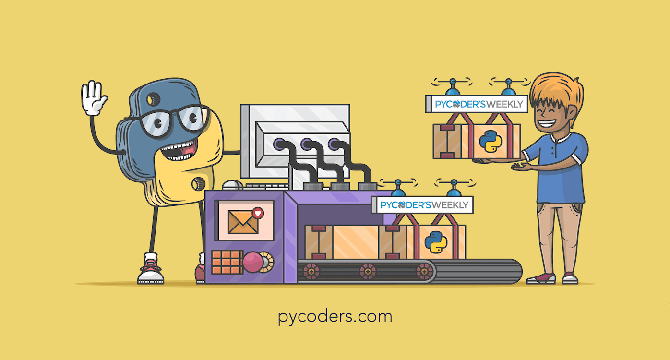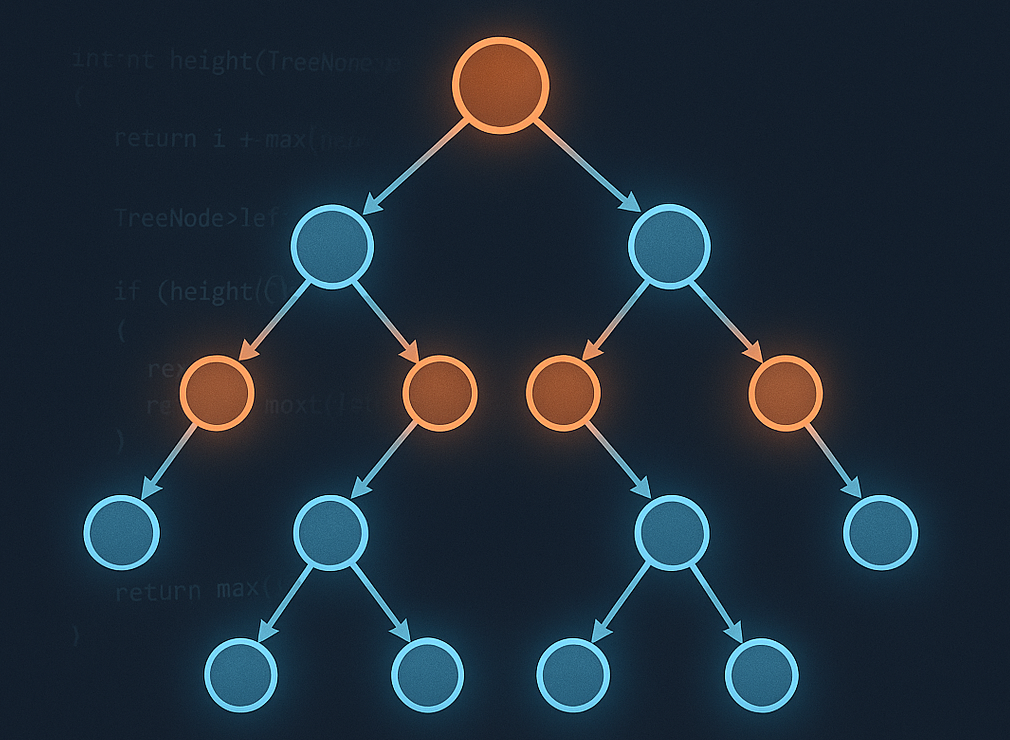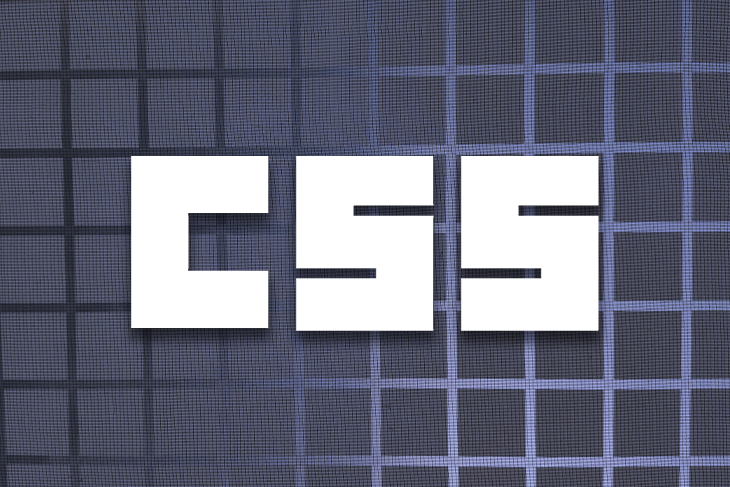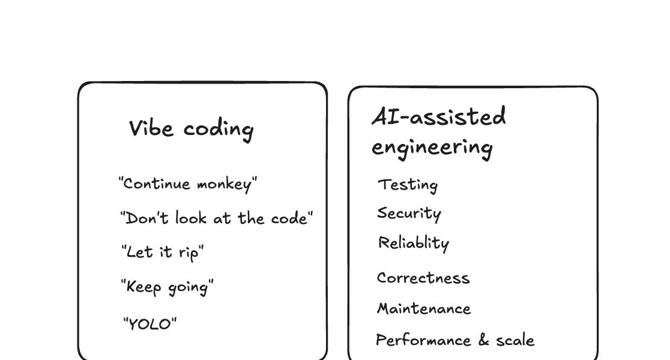Programming News
Logrocket
186

Image Credit: Logrocket
Leader Spotlight: Creating solutions for both patients and providers, with Daric Snyder
- Daric Snyder is the Director of Experience Design at Emplify Health, a regional healthcare system, with a background in digital media and customer experience.
- He discusses the challenges of creating user-friendly healthcare software that caters to both patients and providers.
- Emplify Health underwent changes due to COVID and a merger, pushing them towards digital adoption and agile methodologies.
- Autonomy and freedom for teams are crucial for meaningful scaling of products within an organization.
- Real, genuine feedback in digital healthcare transformation is obtained through product analytics tools and direct patient interactions.
- The shift to digital healthcare post-COVID has emphasized the need for user-centric design and addressing underlying challenges.
- Balancing the needs of diverse user populations in healthcare requires understanding and catering to various demographics and preferences.
- Design and delivery challenges in healthcare include regulatory compliance, security, and balancing care team and patient needs.
- Digital transformation in healthcare has faced challenges, especially in aligning user behavior with product expectations.
- Human-centered design is crucial for building solutions that address the needs of vulnerable populations and diverse user groups.
Read Full Article
11 Likes
Dev
1.4k

Image Credit: Dev
My Web Development Journey: How I Got Started
- The journey into web development began with curiosity and Google searches, not with a tech background.
- Started by watching a YouTube video on building a website with HTML and CSS, leading to discovering free learning resources like FreeCodeCamp and MDN Web Docs.
- Faced challenges while learning JavaScript but stayed motivated by setting small goals and engaging with online communities.
- Progressed to learning responsive design, JavaScript frameworks like React, and backend tools, focusing on mastering the basics first before adding more tools to the toolkit.
Read Full Article
8 Likes
Medium
128

How I Went from 0 to 5,000 Newsletter Subscribers and Made $1,200/Month
- By focusing on a niche he was familiar with, the individual created a $19 ebook and utilized Blotato for automating content distribution.
- Blotato transformed the ebook content and newsletter into platform-native posts, videos, and graphics for Twitter, Instagram, LinkedIn, and Pinterest.
- After 6 weeks, the strategy resulted in gaining 5,000+ newsletter subscribers and generating $1,200 monthly from ebook sales, all managed in less than 2 hours per week.
- This approach involved using AI to promote the product continuously without a team, burnout, or writer's block, showcasing the efficiency of leveraging automation for solopreneurs.
Read Full Article
7 Likes
Dev
159

Image Credit: Dev
Mastering REST API Authentication: A Developer's Security Handbook
- This handbook delves into four crucial REST API authentication methods: Basic Auth, JWT tokens, OAuth 2.0, and API keys, highlighting implementation details and security considerations.
- Authentication plays a vital role in preventing data breaches, system manipulation, infrastructure abuse, and compliance violations in modern REST API-dependent applications.
- Basic Auth involves sending credentials with each request using base64 encoding in the Authorization header, requiring additional security considerations like HTTPS and proper password policies.
- JWT Token-Based Authentication uses signed tokens to verify identity without repeatedly sending passwords, with security best practices including short expiration times and token revocation.
- OAuth 2.0 enables secure delegated access without exposing user credentials, suitable for third-party integrations, microservices architectures, granular permissions, and user consent workflows.
- API Key Authentication offers service-level authentication with strategies like hash storage, rate limiting, scope validation, key rotation, and monitoring.
- By evaluating factors like implementation time, scalability, security level, token revocation, and cross-domain support, developers can choose the right authentication method for their applications.
- Implementation best practices include a layered security approach, comprehensive monitoring and alerting, and considerations for future-proofing with emerging authentication patterns.
- Balancing security with usability is crucial for a robust authentication system, requiring a clear threat model and understanding of user needs to make informed decisions.
- Ultimately, the security posture of an API relies on strategic authentication decisions that align with specific project requirements and user expectations.
- For more insights on REST API authentication methods, refer to the original blog post: https://guptadeepak.com/unlocking-the-gates-rest-api-authentication-methods-for-modern-security/
Read Full Article
9 Likes
Discover more
- Software News
- Web Design
- Devops News
- Open Source News
- Databases
- Cloud News
- Product Management News
- Operating Systems News
- Agile Methodology News
- Computer Engineering
- Startup News
- Cryptocurrency News
- Technology News
- Blockchain News
- Data Science News
- AR News
- Apple News
- Cyber Security News
- Leadership News
- Gaming News
- Automobiles News
Dev
53

Image Credit: Dev
Deploying Express + TypeScript + Prisma to Render: What Went Wrong (and How I Fixed It)
- When deploying an Express + TypeScript + Prisma backend to Render, faced unexpected errors requiring fixes.
- Error 1: TypeScript did not recognize basic Node.js globals like process and console, fixed by moving @types/node to dependencies.
- Error 2: Render could not find index.js, resolved by updating Start Command in Render Dashboard.
- Error 3: @prisma/client did not initialize, resolved by updating Prisma generator config and build script.
Read Full Article
3 Likes
PlanetPython
44
Image Credit: PlanetPython
Armin Ronacher: AI Changes Everything
- Armin Ronacher reflects on how AI has drastically changed his work habits and productivity, allowing for more time in his day.
- He explains how he has transitioned from being hands-on in programming to delegating tasks to AI, leading to increased efficiency.
- Ronacher expresses optimism about the future impact of AI, acknowledging its omnipresence and transformative potential in various aspects of life.
- He discusses the rapid adoption and integration of AI in everyday activities, highlighting its broad influence on society.
- The author notes the reluctance of some technologists to embrace AI advancements, despite its undeniable capabilities and implications.
- Ronacher raises thought-provoking questions about the future of education, human interaction with AI, and the global implications of AI development.
- He emphasizes that while AI may change the roles of programmers and artists, their skills will remain valuable in a new technological landscape.
- The article concludes on an optimistic note, asserting that AI has the potential to enhance human agency, expand knowledge access, and drive innovation across various fields.
- Ronacher encourages embracing the transformative power of AI with curiosity and responsibility, likening this era to past revolutionary technological advancements.
Read Full Article
2 Likes
Medium
395

Image Credit: Medium
Symphony for the Broken Future
- Building systems in a rapidly deteriorating world where automation leads to forgetfulness.
- The reliance on cloud architecture without proper documentation leading to eventual abandonment.
- The analogy of building global-scale systems under pressure compared to a slow symphony of entropy.
- The importance of leaving behind documentation, patterns, and intent for successors in the tech industry.
Read Full Article
23 Likes
PlanetPython
413

Image Credit: PlanetPython
PyCoder���s Weekly: Issue #684: NumPy Type Hints, LEGB, Pyrefly vs ty, and More (June 3, 2025)
- Thanks to improvements in NumPy typing support, NumPy generic arrays can now type both shape and dtype, offering opportunities for improved static analysis and run-time validation.
- A video course is available to help understand the LEGB rule and Python scope, helping to avoid name collisions in code.
- A checklist to prevent Postgres slowdowns in Python apps by monitoring performance and maintenance, including slow query detection and optimizing indexes.
- Comparison between Python's new Rust-based type checkers, Pyrefly and ty, discussing performance and capabilities.
Read Full Article
24 Likes
Insider
1.2k

Image Credit: Insider
Amazon is in talks to roll out AI coding assistant Cursor internally as employee interest spikes
- Amazon is in talks to adopt the AI coding tool Cursor for its employees.
- Amazon typically advises employees to be cautious using outside AI tools.
- Several employees at the tech giant have been pushing to use Cursor.
- An internal Slack message revealed that Amazon is in discussions with Cursor to deploy the AI tool while addressing security concerns.
Read Full Article
14 Likes
Fueled
182

Image Credit: Fueled
WordPress Launches AI Team With Google, Automattic, and Fueled Leaders
- WordPress has launched a new AI Team with representatives from Google, Automattic, and Fueled to integrate artificial intelligence into the WordPress ecosystem through practical tools and features.
- The AI Team aims to define a roadmap for supporting AI-powered capabilities in WordPress through official, community-backed plugins and frameworks, rather than directly embedding AI into the core.
- The initiative signifies WordPress taking proactive steps to integrate AI into its platform, aligning with its core values of openness, user ownership, and community collaboration.
- The team's experience with the ClassifAI AI plugin for WordPress will inform their contributions to the AI initiative, focusing on delivering enterprise-grade solutions and advancing AI capabilities within WordPress.
Read Full Article
10 Likes
Medium
53

Image Credit: Medium
I Got A Free Cloud Server for Life
- Oracle Cloud's Always Free Tier allows users to run a cloud server with 4 CPUs, 24 GB RAM, and 200 GB storage for free, forever.
- Unlike other cloud providers with free trials that expire after a year, Oracle Cloud's offering does not have any time limit or hidden fees.
- This free cloud server can be used for various purposes such as hosting websites, running game servers, or developing backend systems for applications.
- Oracle Cloud's generous free tier provides a reliable server that exceeds the limitations of free tiers offered by other major cloud providers.
Read Full Article
3 Likes
Medium
84

Image Credit: Medium
Binary Tree : 6 Core Problems with Intuition & Optimized Code
- Binary Trees are crucial in computing and mastering them is essential for tech interviews at top companies like Google, Amazon, and Microsoft.
- Understanding recursive thinking, depth-first search, and optimal tree traversals is key in solving classic binary tree problems.
- Height of a binary tree is calculated recursively by finding the maximum depth from root to leaf nodes.
- A height-balanced binary tree ensures that the height difference between left and right subtrees of every node is at most 1 for better performance.
- Calculating diameter in a binary tree involves finding the longest path between any two nodes, which may or may not pass through the root.
- Finding the maximum path sum in a binary tree involves considering all possible paths for each node and recursively combining the results.
- Checking for identical binary trees involves traversing both simultaneously and comparing node pairs.
- Zig Zag or Spiral Level Order Traversal is a unique way of traversing a binary tree with alternating left to right and right to left movements.
- Optimizing Zig Zag traversal by using two stacks helps maintain the zig-zag pattern without needing to reverse elements.
- Mastering binary trees goes beyond mere coding skills and involves recursive thinking and understanding traversal patterns.
Read Full Article
5 Likes
Dev
426

Image Credit: Dev
What is Multimodal AI
- Multimodal AI is a significant breakthrough in artificial intelligence, allowing systems to process and generate content across various media forms seamlessly.
- Unlike traditional AI models, multimodal AI processes multiple types of input data simultaneously, creating a holistic understanding of information.
- Multimodal AI systems have evolved from single-modal AI to integrated systems across text, images, audio, and video, offering seamless integration and content generation.
- Key components of multimodal AI include unified representation spaces, cross-modal attention mechanisms, multi-task learning, and foundation models with multimodal capabilities.
- Leading multimodal AI systems in 2025 include GPT-4.5 Omni, Google Gemini 2.0, Anthropic Claude Opus, and Meta's Llama Vision.
- Practical applications of multimodal AI span industries like healthcare, e-commerce, content creation, education, and accessibility, transforming how businesses operate and serve customers.
- Developers can integrate multimodal AI through API-based services, open-source models, and multimodal frameworks, with challenges including computational requirements, alignment across modalities, ethical considerations, and biases.
- Future trends in multimodal AI include increased efficiency, enhanced reasoning capabilities, real-time multimodal interaction, and domain specialization for specific industries or applications.
- Multimodal AI redefines how AI systems perceive and interact with the world, opening up new possibilities for developers to create more natural and powerful AI experiences.
- The future of multimodal AI promises to transform technology interaction, offering more personalized and efficient solutions for various domains.
Read Full Article
25 Likes
Logrocket
262

Image Credit: Logrocket
When to use Flexbox and when to use CSS Grid
- CSS Flexbox and CSS Grid are two powerful layout systems built into CSS that have replaced older techniques like floats and clearfixes.
- Flexbox is ideal for one-dimensional layouts, such as aligning and spacing items in a row or column, making it suitable for UI components and small-scale layouts.
- On the other hand, CSS Grid is designed for two-dimensional layouts, making it perfect for full-page structures and more complex designs.
- Using a combination of Flexbox and Grid can result in cleaner, more scalable CSS layouts.
- Flexbox simplifies arranging items in rows or columns within a container, eliminating the need for positioning hacks.
- CSS Grid offers precise control over both rows and columns simultaneously, allowing for complex, organized layouts without relying on old CSS tricks.
- Both Flexbox and Grid provide key alignment properties like justify-content, align-content, align-items, align-self, making layout control easier.
- CSS Grid is more suitable for complex designs, layouts requiring gaps between elements, or overlapping elements, while Flexbox is preferable for alignment tasks and content-first design.
- Flexbox is recommended for small layouts, element alignment, and content-first design choices; CSS Grid is better for complex designs, gaps between elements, and layout-first design.
- Understanding when to use Flexbox for alignment and Grid for layout helps in creating well-built web layouts that are responsive and maintainable.
Read Full Article
15 Likes
The Pragmatic Engineer
353

Image Credit: The Pragmatic Engineer
Vibe Coding as a software engineer
- The term “vibe coding” is gaining traction in the software engineering community, popularized by computer scientist Andrej Karpathy.
- Vibe coding involves letting AI generate code with minimal human intervention, primarily focusing on high-level goals.
- Popular vibe coding tools include GitHub Copilot, Claude Code, and ChatGPT, aiding developers in code generation.
- Use cases for vibe coding include prototyping, brainstorming, and improving development tools.
- Vibe coding is not recommended for production-ready code due to potential security, performance, and cost issues.
- AI advancements are making Large Language Models (LLMs) more proficient in coding, enhancing prototyping speed.
- Vibe coding is differentiated from AI-assisted coding, where the former involves minimal code review and letting the AI do most of the work.
- Vibe coding tools such as GitHub Copilot, Claude Code, and ChatGPT are prominent in the developer community.
- Vibe coding is often utilized for prototyping and UI design, leveraging AI for faster development processes.
- Various tools and platforms like GitHub Copilot, Claude Code, and ChatGPT aid in code generation through AI assistance.
- Fullstack web platforms like Lovable, Vercel, and Replit offer solutions for rapid prototyping and fullstack app development.
Read Full Article
16 Likes
For uninterrupted reading, download the app